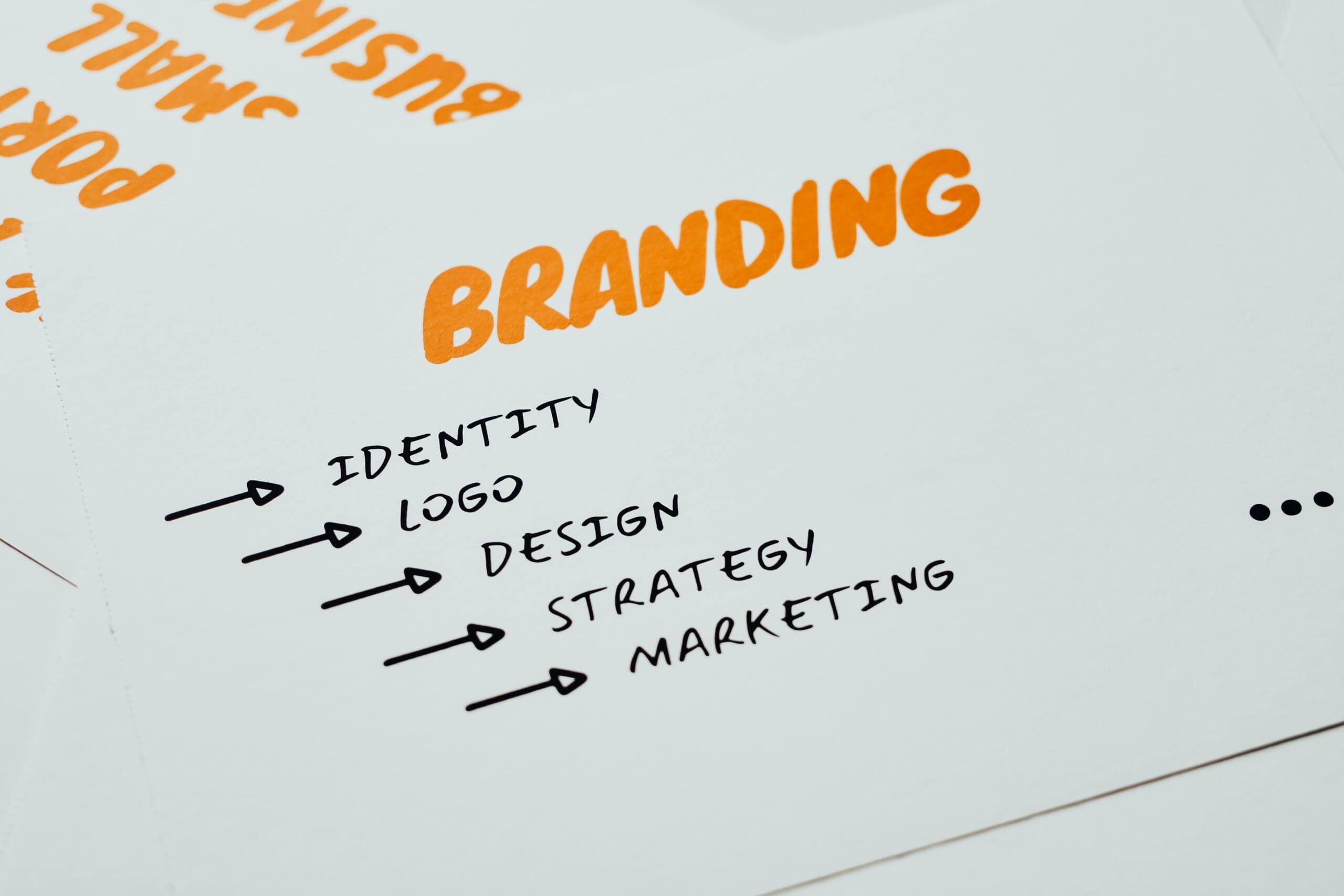Picture this: You’re scrolling through LinkedIn and see a business post that immediately makes you squint. Red text blazes across a bright blue background, and something feels… off. You can’t quite put your finger on it, but you scroll past without reading.
This exact scenario happened recently with one of our clients at Fusion. We immediately reached out because this seemingly innocent color choice was quietly undermining their professional image.
If you’re a business owner handling your own marketing materials, this article could save you from making the same costly mistake.

The Science Behind the Strain
When you place red text on a blue background, you’re creating what designers call “visual vibration.” Here’s what’s happening to your readers’ eyes:
Red and blue sit at opposite ends of the visible light spectrum. Your eyes literally cannot focus on both colors simultaneously, forcing them to constantly readjust. This creates immediate eye strain that viewers feel but can’t always identify.
Remember those red and blue 3D glasses from the ’80s? They worked by exploiting exactly this phenomenon. The red lens filtered out blue light while the blue lens blocked red light, creating separate images for each eye that your brain combined into 3D.
But what makes for great movie magic makes for terrible business communication. When you use red text on blue backgrounds, you’re essentially creating an unintentional 3D effect without the carefully calibrated images that make it work. The result? Visual confusion and immediate discomfort.
The Psychology of Color Conflict
Colors don’t just affect us visually. They trigger psychological responses that influence how people perceive your message.
Red signals urgency, alertness, and sometimes danger. It puts people on guard and activates what psychologists call “avoidance motivation.” Blue does the opposite, promoting calm, trust, and “approach motivation” that encourages exploration and creativity.
Using them together sends conflicting emotional signals. It’s like telling your audience to “HURRY UP AND RELAX” simultaneously. No wonder people feel uncomfortable without knowing why.
The Business Impact You’re Missing
Accessibility Concerns
About 8% of men and 0.5% of women have color vision deficiencies that make red-blue combinations particularly difficult to read. In an age where accessibility isn’t just good practice but increasingly required by law, this color pairing risks excluding potential customers.
Professional Perception
Small design details create lasting impressions. When potential customers encounter elements that create subconscious friction, they associate that discomfort with your brand. Amateur design choices signal amateur business operations, whether that’s fair or not.
Reduced Engagement
If your audience has to work harder to read your message, they’re less likely to absorb it. Most will simply scroll past, taking their business elsewhere.
When Red and Blue Actually Work
Having red and blue in your branding isn’t necessarily problematic. As John Hofmann, Founder of Fusion Marketing, explains: “Depending on your industry, red can excite everybody while blue can bring a sense of calmness. Look at Bank of America, Burger King, Pepsi, and Domino’s. All those designs do a fantastic job of pairing blue with red. It’s important to understand what message you’re trying to convey and to whom.”
The crucial difference? Successful brands don’t place red text directly on blue backgrounds. Instead, they:
- Separate colors with white space
- Use colors for different elements (red logo, blue text on white)
- Create clear visual hierarchy
- Ensure high contrast between text and its immediate background
Better Alternatives That Build Trust
High-Contrast Combinations
- Black text on white backgrounds

- White text on dark backgrounds

- Dark blue text on light backgrounds

Strategic Color Usage
- Follow the 60-30-10 rule: dominant color (60%), secondary color (30%), accent color (10%)
- Use blue backgrounds with white, yellow, or light gray text
- Place red text on white, light gray, or cream backgrounds
Testing Your Choices
Tools like WebAIM’s Contrast Checker verify whether your color combinations meet accessibility standards and provide good readability.
The Professional Approach
At Fusion, we methodically pair colors, fonts, and visual elements based on established design principles and psychological research, not just what looks appealing at first glance.
We remove the guesswork from visual identity development, allowing business owners to focus on what they do best: running their companies.
Small design choices have cumulative effects. The right color combinations don’t just avoid problems; they actively support your message, reinforce your brand personality, and create the emotional response you want from your audience.
Your Next Steps
Review your current marketing materials with fresh eyes. Look for red text on blue backgrounds in your:
- Social media posts
- Website headers
- Business cards
- Flyers and brochures
- Email signatures
For each instance, ask yourself: Does this combination serve my message, or does it create unnecessary friction?
Remember, effective branding isn’t about the colors you like personally. It’s about creating visual communication that works for your audience and supports your business goals.
Ready to develop a cohesive, professional visual identity? Contact Fusion Marketing to learn how we can transform your brand presence across all platforms.






